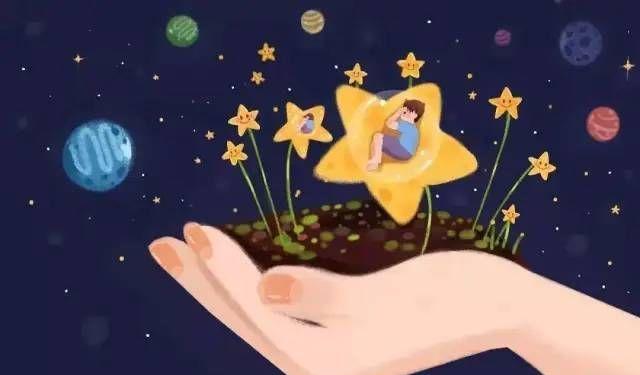World Autism Awareness Day

Despair is a shadow, everywhere.
But if you are light, the world will not be dark;
If you have hope, the world will not despair.
Autism made her an "unusual" child
As with many autistic families, Grace's parents had to endure their children's abnormal behavior every day.
She is often immersed in her own small world, always turning a blind eye to her parents, to others, to everything around her.
He also doesn't like to talk, and he also twitches his hands, screams suddenly, hits people and even hurts himself...
These daily performances of her daughter made her parents very headache and helpless. This situation continued until Grace was two years old and three months old, and the doctor diagnosed autism. This also places a huge financial and spiritual burden on their families who are not rich. Grace's mother said: "Everyday life is like a fierce war. ”
Grace's parents are both sad and broken, worrying about whether their child's situation will grow worse and worse with their child's future situation. After all, autistic children have no way to participate in social activities normally, and abnormal behavior can lead to lack of exercise and unbalanced diet.
All kinds of sorrow, confusion, and helplessness are about to crush Grace's parents. It wasn't until 2015, when Grace was 5 years old, that they saw a glimmer of hope.
Grace's mother received an email informing duke that she was working on a clinical program to "Autologous Cord Blood Stem Cells for Autism in Children." Her parents immediately agreed to join. They are willing to do whatever it takes to help their daughter.
The stem cell trial, led by Professor Joanne Kurtzberg, included not only autism but also brain damage disorders such as cerebral palsy and hydrocephalus. They believe that infusion of stem cells may be able to rebuild the connections between the nerves of the brain and restore the function of the brain nervous system.
But this is an experiment after all, and no one can guarantee the consequences.
Lucky Grace
In the midst of all the unknowns, Grace's parents decided to take a risk. The mother said, "We don't know what to expect? If there's even a glimmer of hope, I want to try it. ”
The results were reassuring: Grace was no longer reticent after the experiment, no longer nervous and collapsed from being in a crowd, no aggressive behavior, kissing and hugging her family, and improving her learning ability.
Grace's mother said that before participating in the project, her daughter's autism affected their family's daily life by about 75%. But after receiving stem cell therapy, only 10% of this effect remained.
She also said, "The most positive thing is that we met new friends, and when I told my new friends that she had autism, they were shocked and said that if I hadn't told her personally, they would never have known that she was an autistic child."
Grace's sister said, "My sister has changed a lot, she used to not speak, often kicking and hitting people." But she has changed completely now, she has become cute and calm. ”
The above results are very exciting. However, it must be pointed out that Grace is not completely cured, and she still retains some small traits of autism. Fortunately, at present, she can live like an ordinary child.
I have to say that Grace is lucky, but not every child is like Grace.
After all, in terms of the overall research progress, there are still many hidden dangers that have not been confirmed.
Professor Joanne Kurzberg, the lead expert on the research project, believes that Grace's participation in the study has yielded at least three benefits:
1. The safety of autologous cord blood stem cells in the treatment of autism in children was verified;
2. Confirm that a certain cell or substance in the autologous umbilical cord blood has the effect of reducing inflammation and rebuilding the brain connection;
In the project, 25 children in the follow-up and assessment after 6 months found that most of the children experienced behavioral improvement; some children improved in language, enhanced communication skills, and reduced bad repetitive behaviors.
Stem cell therapy for autism can be expected in the future
From the results of various disclosed clinical trials of stem cell therapy for autism, children involved in the treatment have significant improvements in social, communicative, and adaptive behaviors, such as smiling and eye contact; thinking, attention, and cognition; and speaking and language patterns and usage. Inappropriate emotional responses, self-stimulating behaviors, unexplained excitement or agitation, and exaggerated emotional responses were also reduced.
However, due to the unclear cause of the disease, it is difficult to determine whether some of the improvements in symptoms are related to therapy or to natural development. Therefore, more research is needed to consolidate the conclusions.
What is now certain is that autism is a developmental disorder and generally goes with intellectual disability. Early detection and early intervention are the best coping methods, and the earlier the treatment age, the more obvious the improvement.
Until there is a breakthrough in stem cell therapy for autism, the best way to help children with autism is to seek evidence-based treatment recommended by pediatricians and other specialists, which involve behavioral therapies such as ABA. After decades of practice and extensive medical research, this therapy has been shown to help people with autism manage behaviors related to their condition.
We believe that with the joint efforts of medical experts around the world, more roles and values of stem cells in the treatment of autism will gradually be tapped. By optimizing treatment strategies and combining other new technologies, the time for children with autism to fully recover and return to society is not far away.
The content of this article is for popular science reference only and does not have any clinical treatment recommendations or directions